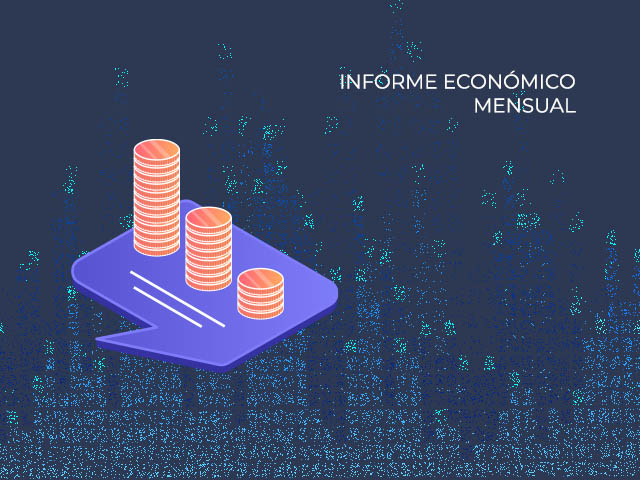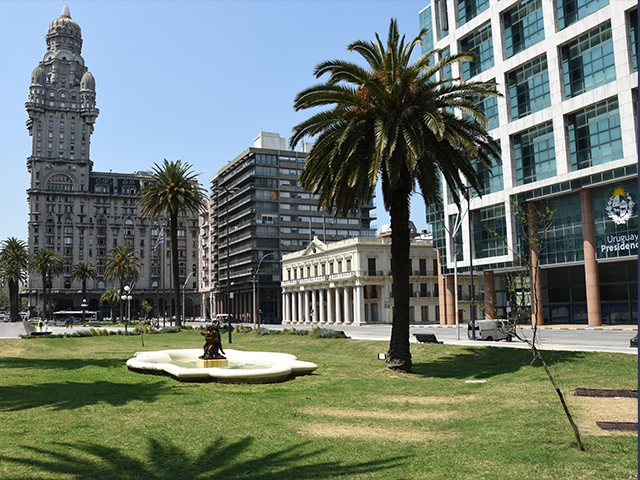Uruguay Economic Report – October 2025
In the recently concluded month of October, the evolution of the indicators we have been monitoring was as follows:
📉 Country Risk and Inflation
Uruguay’s Country Risk (measured by the UBI Index published by República AFAP) as of 31/10/2025 shows a value of 62, representing a 1.64% variation for the month. Likewise, when considering the last 12 months, this index had a negative variation of -16.22%, despite the volatility arising from international geopolitical events (for example, the ongoing war situation in Eastern Europe, added to that in the Middle East, along with the tariff war promoted by the U.S. President, and the domestic climate marked by a recent change in government following last year’s electoral cycle — all of which have prolonged impacts over several months). So far in 2025, this indicator has shown a negative variation of -23.46%.
Regarding inflation, according to data published by the National Institute of Statistics (INE), the CPI for October 2025 recorded a monthly variation of 0.40%, an accumulated increase of 3.60% for the year, and 4.32% over the last 12 months. Thus, the indicator once again remained below the official target of 4.5%, after staying within the target range for twenty-nine consecutive months — the longest period since the inflation targeting system began in 2003. This confirms the deceleration trend observed since September 2024, which reversed the acceleration experienced in the four previous months.
At the beginning of 2025, inflation resumed its deceleration in the 12-month rolling accumulation, with a slight increase in February (from 5.05% to 5.10%), accelerating in March to 5.67%, and then declining in April to 5.35%. The same pattern continued: May fell to 5.05%, June to 4.59%, July to 4.53%, August to 4.20%, a slight uptick to 4.25% in September, and another mild rise to 4.32% in October. The variation in the 12-month accumulated rate reflects that October 2024 (0.33%) dropped out of the measurement, replaced by October 2025 (0.40%), which was slightly higher. Additionally, the 12-month accumulated figure recorded a second small increase after five consecutive declines. The 4.20% reached in August 2025 represents the lowest level since May 2024 (4.1%), when inflation had begun to rebound after hitting a nearly 20-year low of 3.68% in April 2024.
Considering the January–October accumulated period, the CPI shows an increase of 3.60%, compared to 4.76% a year earlier.
💰 Monetary Policy
The Central Bank of Uruguay (BCU) maintained the Monetary Policy Rate (MPR) at 8.50% during October, consolidating the pause in the easing cycle that had begun in July 2023. The decision was based on inflation expectations that, although anchored within the target range, remain above the center of the band (3–6%), as well as on the need to prevent exchange rate volatility.
According to BCU communications, the monetary authority will continue monitoring the evolution of prices, wages, and inflation expectations, maintaining a prudent stance to ensure the sustainability of the disinflation process.
💵 Exchange Rate
The US dollar closed October 2025 at UYU 38.70, marking a monthly appreciation of 0.25% against the Uruguayan peso. Over the year, however, the exchange rate shows a cumulative depreciation of -2.1%, in line with regional trends and global dollar weakness due to lower U.S. inflation and the Federal Reserve’s recent rate cuts.
The nominal exchange rate continues to show relative stability, supported by the Central Bank’s interventions to avoid excessive volatility. The real exchange rate index (computed by BCU) remains at levels similar to those of 2024, indicating that Uruguay’s competitiveness has not suffered major changes.
🌎 Foreign Trade
According to Uruguay XXI data, exports of goods totaled USD 8.96 billion between January and October 2025, representing a 6% decrease compared to the same period of 2024. The decline is mainly explained by lower prices in agricultural commodities (particularly soybeans and dairy products) and reduced demand from China.
On the other hand, imports amounted to USD 7.85 billion, down 3% year-on-year, reflecting a contraction in capital goods purchases and lower fuel prices.
As a result, the trade balance recorded a surplus of USD 1.11 billion, compared to USD 1.45 billion in the same period of 2024.
👷♂️ Labor Market
The unemployment rate stood at 7.8% in September 2025 (latest available data), marking a slight decline from the 8.1% recorded in August. Employment and activity rates remained stable, with moderate improvements in the services and construction sectors.
Real wages grew 2.5% year-on-year, reflecting wage adjustments above inflation in collective bargaining agreements. However, labor market heterogeneity persists, with greater dynamism in urban areas and slower recovery in rural zones.
🏭 Sectoral Evolution
🥖 Food Industry:
The sector remains under pressure due to lower export prices and competition from regional producers, though domestic consumption remains stable.
👚 Textile and Apparel:
Slight recovery observed in production and employment, driven by domestic demand and increased tourism-related sales.
🚗 Automotive and Machinery:
Sustained rebound in vehicle sales, particularly of hybrid and electric models, aligned with regional recovery and tax incentives.
⚡ Energy:
Renewable generation continues to account for 95% of total electricity production. The government confirmed new investments in wind and solar infrastructure for 2026–2027.
🏡 Real Estate:
The real estate sector maintains strong performance, especially in Montevideo’s coastal and suburban areas, supported by foreign demand and low mortgage rates.
📊 Summary
Uruguay continues to show macroeconomic stability, with low and controlled inflation, solid reserves, and a favorable investment climate despite global volatility.
The combination of fiscal prudence, monetary discipline, and institutional strength positions the country among the most stable economies in Latin America.



